:quality(80)/business-review.eu/wp-content/uploads/2016/11/foreign-investors-summit-day-2-it-c.jpg)
The Foreign Investors Summit, the 3-day exclusive event organized by Business Review magazine, continues with the second day, in which we will analyse the main industries that have attracted strong investments in the past year. After the first day, in which representatives of the government and of the private sector have talked about the country’s strategy and the new avenues to attract investments, on Wednesday the panelists will focus on the IT&C, R&D, Energy and Automotive industries.
Industry Zoom: Automotive
Patrick Moleins – General Manager, NTN SNR
We are planning a new factory spread over 10,000 square meters. We need more staff trained in the automotive sector and a highway, as the number of kilometers of highway in Romania is not sufficient.
Johannes Heidecker – CFO, Star Transmission
In the Czech Republic, for instance, it is easy to get supplies from the country, as everything is at a manageable distance. In Romania this is not the case, we need to import things from Germany and this is difficult. This is a criterion when deciding whether to open a factory in a country. One needs to incentivise not only the big fish, but also the small entities.
#FIS 2016 | Mihai Boldijar (Robert Bosch Romania): In the past 10 years we invested EUR 200 mln
Romania needs much stronger exchange between schools and the industry. It can be cheap, as teaching is done for other interests. Teaching should be done by people who improve the technology, because one needs to be competitive. For instance, China is training a lot of engineers. We need to be competitive otherwise they will come and sell their products here.
Mihai Boldijar – General Manager, Robert Bosch Romania
Bosch came back to Romania in ’94. We have, among other, a BPO unit, and an R&D center. This means the framework we found is favorable to investment. They say large countries have their centers abroad, but we have our center here. We tried to combine all activities.
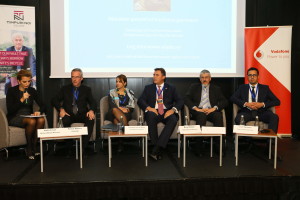
In the past 10 years we invested EUR 200 million.
The automotive industry needs to be in a permanent growth, in order to generate growth in other sectors. We need a competitive framework in Romania. An investor makes an investment if that framework is a competitive one, favourable to investors.
We want a vocational education that is adapted to the Romanian economy, so that at the end of three years of education, the graduate is well-prepared and can handle an expensive car. The legislation is rigid, while in the automotive industry there is a need for flexibility and agility.
Loredana Van de Waart – Partner, Gruia Dufaut Law Office
In Romania it is easy to fire someone but the formalities are excessive. Also, the employer should have a greater flexibility when it comes to working hours. Moreover, there is a need for incentives and advertisement for jobs in Romania in order to attract qualified work force from neighboring countries. As far as vocational education is concerned, there is a legal framework, but we are in the early stages.
Iulian Sorescu, associated partner, head of Financial Department, Noerr
“Aside from the two state aid schemes in place we have to remark the third scheme that is currently under preparation – for small and medium-sized companies,” said Sorescu. He said that for investments of more than EUR 1 million you can receive up to 70 percent financing depending on the location and the size of the company.
“It is a project that is in a very advanced stage,” said Sorescu.
Talking about the two existing schemes, in the past years the application level has increased significantly. He said that for the first times, the funds were not able to cover all the demand this year.
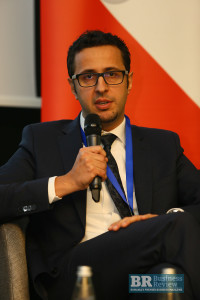
“Maybe the funds should be bigger, maybe it should be allotted based on other criteria so as the offering to be wider so that not only 6 companies out of 36 to receive the financing”.
He said that the current schemes are available up to 2020 so they exist. “The initiative exists but we also have to go on the company’s’ side, which from our point of view, should inform themselves better, to understand the criteria and when they prepare to submit a request for state aid to say that they are meeting the criteria”.
“The flexibility I was talking about earlier exists and doesn’t exist. Talking about public money, the flexibility should be somewhere in the middle meaning that on one hand companies should make a rather prudent business plan so as to make sure it can develop it in the future, to respect those conditions and in the end the money will come.”
“There is a certain level of bureaucracy, which was mentioned by some of the beneficiaries (…) but it is not a high level,” said Sorescu.
Industry Zoom: Energy
Adina Georgescu – Counselor to the Prime Minister, Energy & Environmental Issues
The role of a government is to set the legal framework that encourages investments. We are close to finalizing the energy strategy. In the Romanian energy sector we moved forward towards the creation of a transparent and non discriminatory gas market. Predictability and stability is the legal framework is important and Romania does not have a good image, especially when it comes to the renewable sector, which was the target of changes in regulation.
Romania needs it and the government is involved in aligning the legislation. This is a crucial year in the history of the European energy sector. At the end of November the European Commission will publish three legal initiatives. Romanian stakeholders should get involved in drafting this type of legislation.
Silvia Vlasceanu – Executive Director, ACUE
The Romanian energy sector suffered a lot because of the interventions of the politicians and of instability created with each electoral cycle. There is a need for predictability, a fiscal framework that the public authorities take on. I would be very happy to see a change after this event, namely the amendment of Law 50/1991.
#FIS 2016 | Claudiu Petre (Telekom Romania): The local outsourcing market employs 63,000 people and is worth RON 1.2 billion
Artur Stratan – President, Ropepca
The Ministry of Energy understood that the warnings our association made are not false.
It is difficult to assess whether investments in the oil and gas sector is a satisfactory one, the price of oil hit us hard, especially at the level of services, and related industries, where there are companies that entered insolvency. This is a serious matter for industry and for the Romanian economy in general.
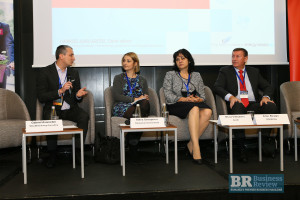
We could attract foreign capital in the 10th round for exploration sites. The state has promised an 11th round for marginal deposits. They did not materialize because of the lack of a coherent fiscal framework.
The Parliament is not efficient, as far as we are concerned. The tasks of finalizing the fiscal framework and the completion of the national energy strategy will be passed on to the new government. Regardless of its political spectrum, our recommendation is that the government should not shelf it, but to push it forward. This is a good document, with sound recommendations for the oil and gas sector and we want them included. They do not increase the fiscal burden, on the contrary.
The oil and gas reserves are finite. If we do not start looking for bigger reserves, in 12 years we will run out of oil and in 9 years we will run out of gas. The rate of replacement of reserves stood at 25 percent in 2015 and at 42 percent in 2014. If we do not generate extra reserves, we will use up what we have.
Industry Zoom: Research & Development
Ramona Jurubita – Partner, Head of Tax and Legal, KPMG
The legislation regulating the R&D sector changed this year, companies received tax incentives, a 50 percent cut in profit tax. In August employees also received an exemption from income tax. But the question is, how easy can the legislation be implemented? What happens for instance, when someone does not understand something. We need a group of R&D experts that can answer questions from both citizens and the fiscal authorities.
Nicolae Zamfir – General Manager, Horia Hulubei National Institute for R&D in Physics and Nuclear Engineering
Unless something changes at a fundamental level, we will not move forward. Research was impacted by lack of funds and brain drain, more than any sector. Young people with a level of training similar to those abroad have left. Only in the past 10 years we saw a preoccupation for retaining talents, and things are improving, but are moving too slowly.
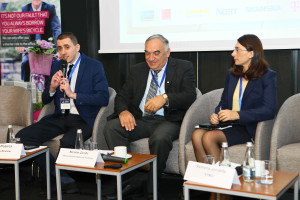
There is a lack of collaboration between scientific research, state funding and involvement of universities. In Romania the link between the three factors is weaker than in other countries. Of course, this must develop organically. The idea to build a research center, the Extreme Light Infrastructure ELI-NP in Magurele, shows the government’s intention of changing the paradigm.
Romania is fifth in Europe when it comes to nuclear physics research. But the industry that can use the results of the research no longer exists.
We started the project in 2013 and hope to make it operational by 2019. We want to work with small companies. But the role of state-funded research is to provide installations that small companies cannot build, as they are expensive. We will have talks, between November 8-9, when we will ask research groups in companies that are interested in collaborating with us.
As far as young researchers are concerned, there are those who peak, but the majority are unprepared. The universities are training thousands of graduates, but the level of preparation leaves a lot to be desired. We are also active in the IT sector. But we have a hard time in attracting young people because we cannot offer the level of salaries they receive in the IT sector.
Industry Zoom: IT&C
Teodor Blidarus – President, ANIS:
The members of the association employ 25 percent of all the people in this industry, said Blidarus, about ANIS. We estimate the turnover of the IT market at EUR 3.6 billion this industry and will exceed EUR 4 billion in 2017. There are 90,000 people employed in this industry.
Around 5,000-6,000 graduates each year in the IT sector, while the demand is of 10,000 to 12,000 people.
Bogdan Pelinescu – Country Manager, Luxoft
We are optimistic about the growth of the IT sector, it is a field that will contribute to future growth. We must highlight the strengths: we have very well qualified people, we have a tradition in IT training. Our future colleagues receive a strong math and informatics education and are obtaining good results at international competitions. We believe that a partnership with the education sector is important and we want to develop it.
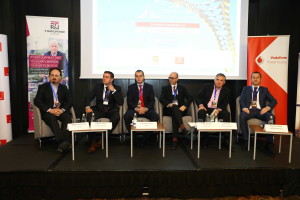
We are investing in training. In Bucharest we have two teams working exclusively in R&D. The first is involved in automated testing and the second one is active in cloud technology. Alongside, we have opened ourselves towards the outside world by offering courses for the general public. We no longer talk about outsourcing, we get access to the latest technologies in order to add more value to services and we implement products.
Claudiu Petre – Structural Funds and business development projects manager, Telekom Romania
The outsourcing industry in Romania employs around 63 000 people and is worth RON 1.2 billion. Currently, the growth rate in the Romanian outsourcing industry stands at 20 percent.
In 2016 the investment in broadband stood at EUR 180 million. BPO in Telekom is a business worth a few million euros. For the past three years, Telekom Austria has been served by our Romanian team. The team includes 220 staff based in Brasov.
Radu Puchiu – Secretary of State, GovItHub
There is a gap between the potential of the sector and the public administration, which is lagging behind.
I understand that the question is: will GovItHub survive? Is there life after the elections? The project is the result of a simple observation. This is a pilot project that can serve as an example and it is part of a wide-ranging framework where we think of the IT services of the administration. We thought we must ask the industry for solutions instead of providing them with a set of tasks, as it was done before.
The Government started a discussion and it is important that we are no longer talking about the classic paradigm. The fact that such a discussion opportunity exists is a great opportunity that triggered an outstanding reaction. The reaction baffled us, so many specialists in the IT sector said ‘let’s work together.’
Ion Sturza – President, Fribourg Capital
We must be aware that we are talking about a myth in the making. The pool of people we have is too small to create a Romanian Silicon Valley. What we need is a big density of talents, and the keyword here is multiculturalism. Romania must be open to attract talents from all over the world. I In order to have a Facebook or a Google in Romania, we must have multiculturalism.
Antoniu Panait – Managing Director, Vastint Romania
What is the added value from the point of view of Vastint? Vastint is continuously learning, from constructors as well as from the tenants, and we are studying the evolution of the building in time.
With 2 million inhabitants, Bucharest is one of the largest cities in Eastern Europe. But the city is lagging behind by 10 years, and, at the same time, is making huge steps in its evolution. We are bringing the technology to meet the expectations of companies everywhere. The tenant is evolving, just like IT companies evolve, they are better informed and are asking more questions.
The employee is more efficient if he or she does not spend a lot of time commuting. The manager thinks of it in numbers, how much productivity is lost. We are working with our colleagues on a study so we can provide them with numbers. We are a partner of IT companies, we are advising them and we build so that employees can be more productive.



:quality(80)/business-review.eu/wp-content/uploads/2024/07/Ilustratie-2.jpg)



:quality(80)/business-review.eu/wp-content/uploads/2024/06/22C0420_006.jpg)

:quality(80)/business-review.eu/wp-content/uploads/2024/06/COVER-1-4.jpg)



:quality(50)/business-review.eu/wp-content/uploads/2023/11/SNIPPETS-FIS-2023_michel-eschenbrenner.jpg)
:quality(50)/business-review.eu/wp-content/uploads/2023/11/SNIPPETS-FIS-2023_andreea-voinea.jpg)
:quality(50)/business-review.eu/wp-content/uploads/2023/11/SNIPPETS-FIS-2023_lucian-enaru.jpg)
:quality(80)/business-review.eu/wp-content/uploads/2024/06/br-june-2.jpg)
:quality(50)/business-review.eu/wp-content/uploads/2024/07/VGP-Park-Timisoara_-8thbuilding_iulie-24.jpg)
:quality(50)/business-review.eu/wp-content/uploads/2024/07/America-House-Offices-Bucharest-Fortim-Trusted-Advisors.jpg)
:quality(50)/business-review.eu/wp-content/uploads/2024/07/BeFunky-collage-33-scaled.jpg)